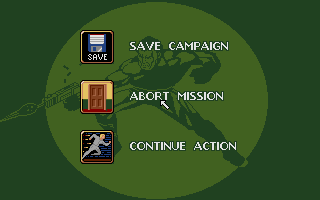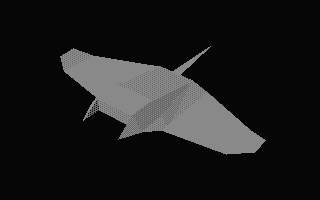Retro Replay Review
Gameplay
Flames of Freedom builds on the open-ended structure of its predecessor by placing you in the shoes of a single covert operative for the Peaceful Atlantic Federation. From the moment you land on the Slave Isles, you gain access to a strategic map that lets you choose where to strike first—whether it’s sabotaging Saharan supply lines, assassinating key officers or secretly funneling resources to local insurgents. This high level of player agency ensures that no two playthroughs feel exactly the same.
(HEY YOU!! We hope you enjoy! We try not to run ads. So basically, this is a very expensive hobby running this site. Please consider joining us for updates, forums, and more. Network w/ us to make some cash or friends while retro gaming, and you can win some free retro games for posting. Okay, carry on 👍)
The real-time first-person sections seamlessly transition from on-foot stealth and close-quarters combat to high-octane vehicle engagements. Whether you’re piloting a hovercraft through mangrove swamps, strafing enemy convoys in a fighter jet or sneaking through Saharan encampments under the cover of night, the engine adapted from Midwinter delivers satisfying controls and intuitive targeting. Each mission objective can be approached with guns blazing, stealthy sabotage or even diplomacy, thanks to your ability to bribe or persuade local rebels to join your cause.
Progress is measured not only by target eliminations but by the morale and allegiance of each island’s population. As you complete assignments, more islands rally to your banner, providing intelligence, safe houses and even local militia support when the Saharan invasion finally arrives. This dynamic “rebel meter” mechanic lends a genuine sense of cause-and-effect to every decision, making each island you liberate feel like a tangible victory in your covert war.
Graphics
Visually, Flames of Freedom retains the rugged charm of the Midwinter engine while introducing more detailed textures and improved lighting effects. Island environments—from sun-drenched beaches to misty mountain passes—are richly rendered, with convincing water shaders that reflect the thawed world’s vast ocean expanses. The diversity of biomes across the Slave Isles keeps exploration fresh, whether you’re trekking through jungles, scaling cliffs or flying over coral atolls.
Character models and NPC animations have also received a notable upgrade. Your operative’s gear, including customizable armor and weapon skins, appears crisply on-screen, and facial animations during brief cutscenes add emotional weight to mission briefings. Enemy soldiers move with realistic gait patterns, and civilian rebels display varied clothing and behaviors, enhancing immersion when negotiating alliances or staging evacuations.
Vehicle and weapon effects—explosions, muzzle flashes and particle debris—are punchy without being overbearing. Even on mid-range hardware, frame rates remain stable, thanks to the engine optimizations carried over from Midwinter’s multi-terrain demands. Minor draw-in occurs on the densest foliage settings, but overall the graphical presentation strikes an appealing balance between nostalgia and modern polish.
Story
Set years after the events of Midwinter, Flames of Freedom opens on a world transformed by climate change. The once-frozen continent has thawed, submerging the original Midwinter stronghold beneath rising seas. In its wake, the Peaceful Atlantic Federation has grown—only to face a ruthless incursion by the slave-trading Saharan Empire. Against this backdrop, the chain of Slave Isles stands as both prize and battleground, its people shackled under imperial rule.
The narrative unfolds through mission briefings, intercepted communications and occasional cutscenes that reveal the suffering of local civilians. Your character, though silent in action, is defined by choices you make—whether to show mercy when capturing a Saharan lieutenant, or to leverage betrayal among Saharan ranks for strategic gain. These moral dilemmas enrich the core storyline, offering moments of introspection amid high-stakes espionage.
As the islands rally one by one, the tension mounts toward a climactic all-out invasion. You’ll witness the fruits of your labor when rebel forces coordinate a final stand against overwhelming Saharan battalions. The emotional payoff is genuine: months of clandestine ops culminate in a united front for freedom, underscored by a stirring score and a final montage that highlights the resilience of a people you helped liberate.
Overall Experience
Flames of Freedom excels at blending first-person action with top-down strategy, giving you both the intimate thrill of infiltration and the macro-level satisfaction of liberating territories. The freedom to choose your approach—violent or diplomatic—fuels countless hours of replay value. Every rebel rescued and every island freed contributes to an emergent narrative that feels uniquely yours.
For players who cherish agency and dynamic world-building, Flames of Freedom is a standout. Though it borrows its engine from an older title, the gameplay innovations and depth of tactical options give it a modern edge. The learning curve can be steep—mastering both vehicle controls and covert infiltration requires patience—but the payoff is a richly rewarding sandbox of guerilla warfare.
Ultimately, Flames of Freedom offers an immersive, multi-layered adventure that challenges you to think like a strategist, fight like a commando and negotiate like a diplomat. If you’re seeking a game that respects player choice and delivers a compelling story of liberation against overwhelming odds, this sequel is well worth your time.
 Retro Replay Retro Replay gaming reviews, news, emulation, geek stuff and more!
Retro Replay Retro Replay gaming reviews, news, emulation, geek stuff and more!









Reviews
There are no reviews yet.